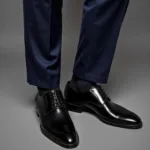Underpainting might seem like an extra step in the already intricate world of painting, but trust us, it’s a game-changer. Think of it as laying the foundation for a masterpiece. Choosing the right underpainting color can dramatically impact the final look of your painting, influencing the overall tone, depth, and luminosity of your artwork.
Understanding the Power of Underpainting
Before we delve into the “how-to,” let’s grasp the “why.” Underpainting is essentially a preliminary layer of paint applied to a canvas before the actual painting process. It acts as a base for subsequent layers, influencing the final colors and creating a sense of depth and harmony.
Think of it like this: Imagine building a house on a solid foundation versus one on unsteady ground. The one with a strong base will be more resilient and visually appealing. Similarly, a well-executed underpainting provides a solid base for your colors to shine.
Factors to Consider When Choosing an Underpainting Color
Choosing the perfect underpainting color is not a one-size-fits-all approach. It requires careful consideration of several factors:
1. Subject Matter:
- Portraits: Warm undertones like burnt sienna, raw umber, or yellow ochre work beautifully for portraits, adding a natural warmth to skin tones.
- Landscapes: Earthy tones like raw sienna, burnt umber, or even a cool gray can establish a sense of depth and atmosphere in landscapes.
- Still Lifes: Consider the overall mood and color palette of your still life. A warm underpainting can add vibrancy, while a cool underpainting can create a sense of tranquility.
2. Desired Mood and Atmosphere:
- Warm and Inviting: Opt for warm undertones like reds, oranges, and yellows to evoke feelings of warmth, energy, and passion.
- Cool and Serene: Cool undertones like blues, greens, and violets can create a sense of calmness, peace, and tranquility.
3. Painting Technique:
- Oil Painting: Oil paints offer great flexibility with underpainting. You can use a thin wash of color or a more opaque layer, depending on your desired effect.
- Acrylic Painting: Acrylics dry quickly, making them suitable for layering. However, it’s crucial to choose an underpainting color that won’t muddy the subsequent layers.
 Different underpainting techniques on canvases
Different underpainting techniques on canvases
4. Personal Preference:
Ultimately, the choice of underpainting color comes down to your artistic vision and personal preference. Don’t be afraid to experiment with different colors and techniques to see what works best for you.
Popular Underpainting Color Choices
Here are some popular underpainting color choices and their effects:
- Burnt Sienna: A versatile warm brown that adds richness and depth, particularly effective for portraits and landscapes.
- Raw Umber: Another excellent choice for landscapes, raw umber creates a sense of earthiness and grounding.
- Yellow Ochre: A warm yellow that adds a luminous quality to skin tones and creates a sunny disposition in landscapes.
- Payne’s Gray: A cool, bluish-gray that can add depth and atmosphere to landscapes and still lifes.
- Ultramarine Blue: A rich, deep blue that can create a dramatic and moody effect.
Tips for Successful Underpainting:
- Prepare Your Canvas: Apply a layer of gesso to prime your canvas before underpainting.
- Thin Your Paints: Use a medium to thin your paints for underpainting, allowing subsequent layers to adhere properly.
- Let it Dry: Allow the underpainting layer to dry completely before applying subsequent layers to prevent colors from muddying.
- Less is More: Start with a thin layer of underpainting and build up gradually if needed.
Expert Insights
“Choosing the right underpainting color is like choosing the right key for a song,” says renowned artist, Emily Carter. “It sets the tone and influences everything that follows.”
Conclusion
Choosing the perfect underpainting color is an art in itself. By understanding the factors involved and experimenting with different options, you can elevate your artwork, adding depth, luminosity, and a captivating quality to your masterpieces. Remember, there are no strict rules, only guidelines. Trust your instincts, embrace the creative process, and let your artistic vision shine through.
FAQ
1. Can I use black for underpainting?
While technically possible, using black for underpainting can result in a muddy effect, making it difficult to achieve vibrant colors in subsequent layers. It’s generally best to avoid using black as an underpainting color.
2. Do I always need to use an underpainting?
No, underpainting is a technique, not a requirement. However, it can significantly enhance the depth and richness of your painting, especially in oil and acrylic painting.
3. Can I use more than one color for underpainting?
Absolutely! Experimenting with multiple underpainting colors can create interesting effects and add complexity to your artwork.
4. What happens if I don’t like the underpainting color I chose?
Don’t worry! You can always paint over it. Allow the layer to dry completely, then apply a new layer of paint.
5. Where can I find more resources on underpainting techniques?
Numerous online tutorials, art books, and workshops offer in-depth guidance on underpainting techniques. Explore these resources to enhance your skills.
Need help choosing the perfect paint color for your next project? Contact us at 0373298888 or email us at [email protected]. Visit our showroom at 86 Cầu Giấy, Hà Nội for personalized guidance from our team of color experts. We’re available 24/7 to answer your questions and help you create a space you’ll love.
